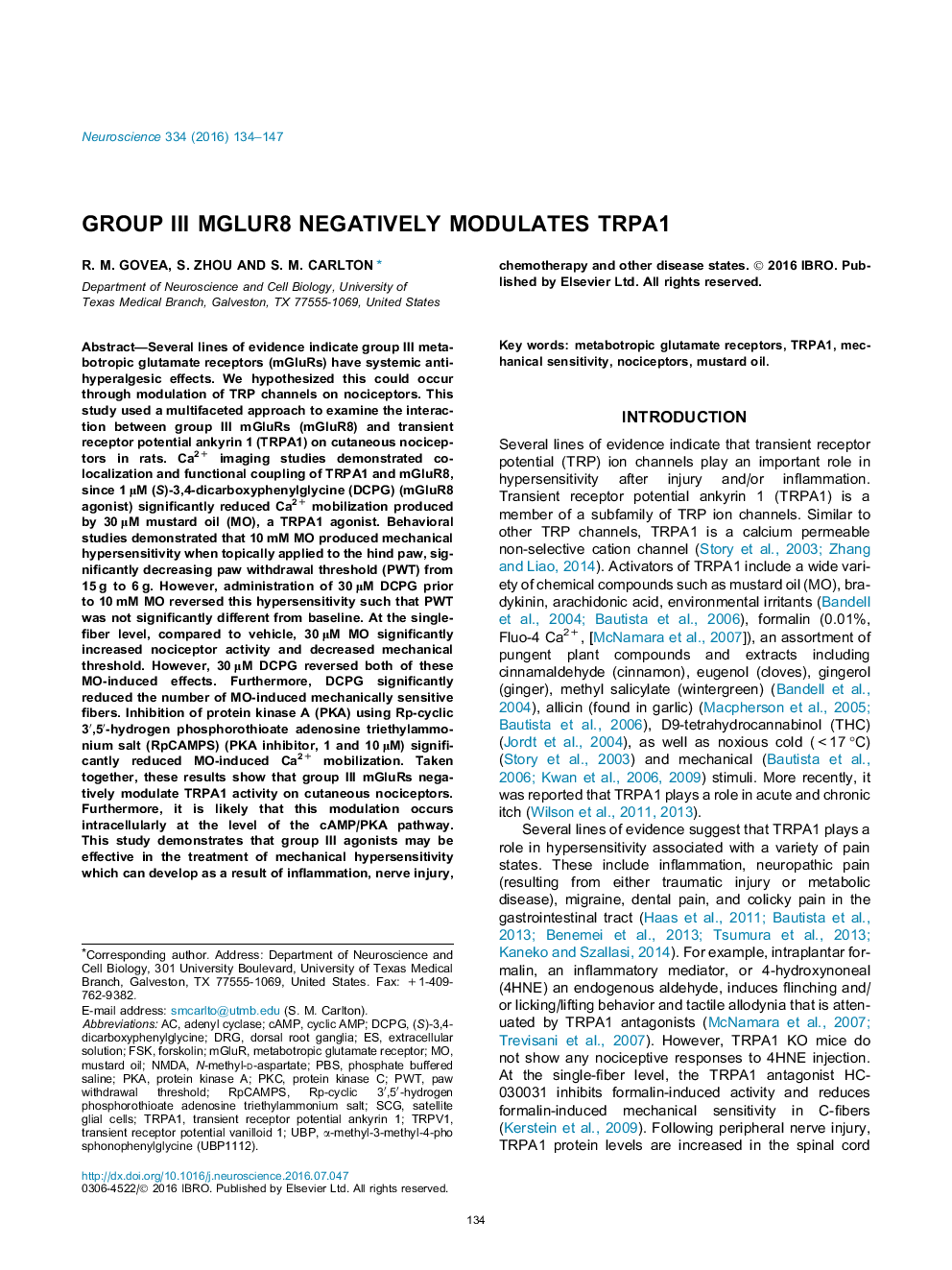| کد مقاله | کد نشریه | سال انتشار | مقاله انگلیسی | نسخه تمام متن |
|---|---|---|---|---|
| 6270794 | 1614742 | 2016 | 14 صفحه PDF | دانلود رایگان |

- TRPA1 activation induces mechanical sensitivity in vivo and in vitro.
- TRPA1 and mGluR8 are co-localized.
- mGluR8 activation attenuates TRPA1-induced activity in vivo and in vitro.
- mGluR8 negatively modulates TRPA1 activity through the cAMP/PKA pathway.
Several lines of evidence indicate group III metabotropic glutamate receptors (mGluRs) have systemic anti-hyperalgesic effects. We hypothesized this could occur through modulation of TRP channels on nociceptors. This study used a multifaceted approach to examine the interaction between group III mGluRs (mGluR8) and transient receptor potential ankyrin 1 (TRPA1) on cutaneous nociceptors in rats. Ca2+ imaging studies demonstrated co-localization and functional coupling of TRPA1 and mGluR8, since 1 μM (S)-3,4-dicarboxyphenylglycine (DCPG) (mGluR8 agonist) significantly reduced Ca2+ mobilization produced by 30 μM mustard oil (MO), a TRPA1 agonist. Behavioral studies demonstrated that 10 mM MO produced mechanical hypersensitivity when topically applied to the hind paw, significantly decreasing paw withdrawal threshold (PWT) from 15 g to 6 g. However, administration of 30 μM DCPG prior to 10 mM MO reversed this hypersensitivity such that PWT was not significantly different from baseline. At the single-fiber level, compared to vehicle, 30 μM MO significantly increased nociceptor activity and decreased mechanical threshold. However, 30 μM DCPG reversed both of these MO-induced effects. Furthermore, DCPG significantly reduced the number of MO-induced mechanically sensitive fibers. Inhibition of protein kinase A (PKA) using Rp-cyclic 3â²,5â²-hydrogen phosphorothioate adenosine triethylammonium salt (RpCAMPS) (PKA inhibitor, 1 and 10 μM) significantly reduced MO-induced Ca2+ mobilization. Taken together, these results show that group III mGluRs negatively modulate TRPA1 activity on cutaneous nociceptors. Furthermore, it is likely that this modulation occurs intracellularly at the level of the cAMP/PKA pathway. This study demonstrates that group III agonists may be effective in the treatment of mechanical hypersensitivity which can develop as a result of inflammation, nerve injury, chemotherapy and other disease states.
Journal: Neuroscience - Volume 334, 15 October 2016, Pages 134-147